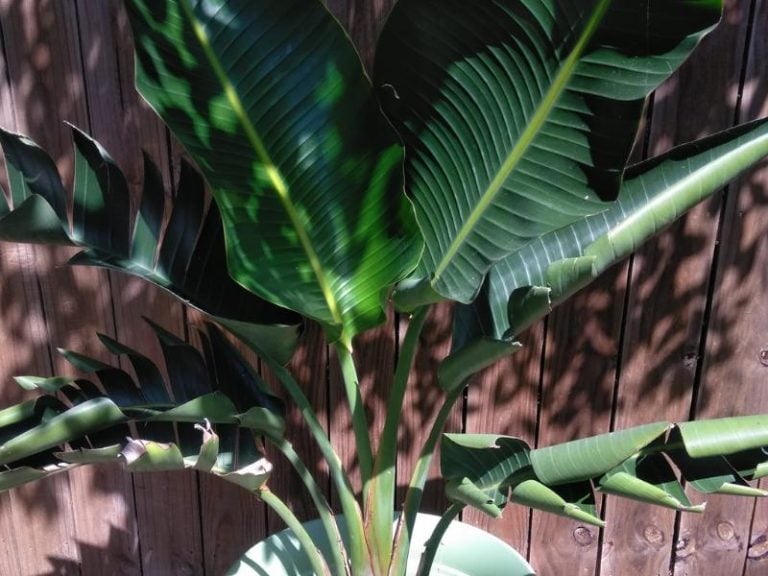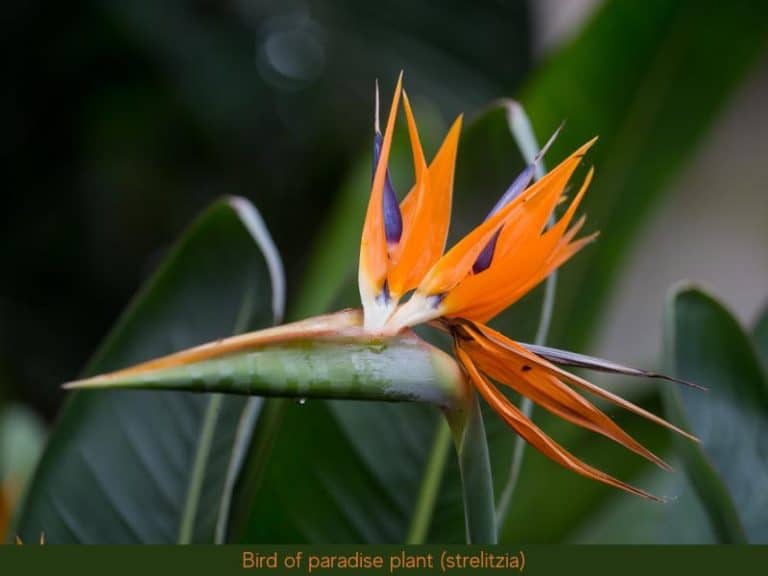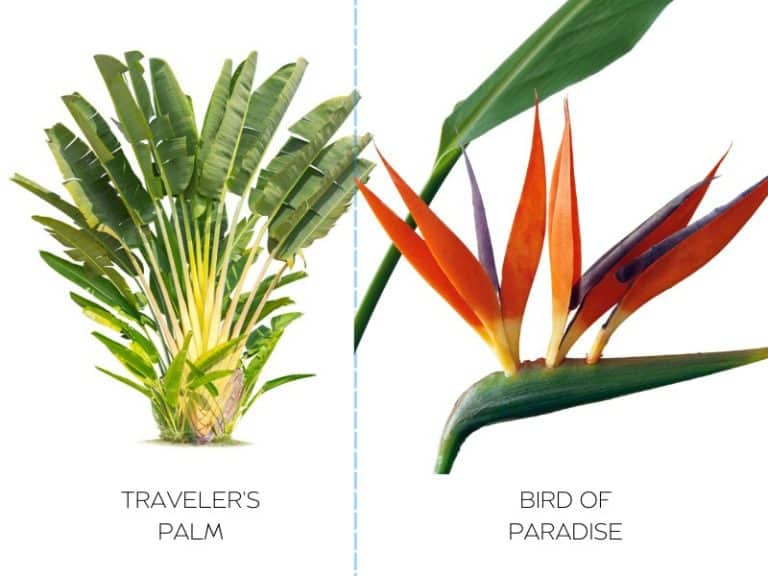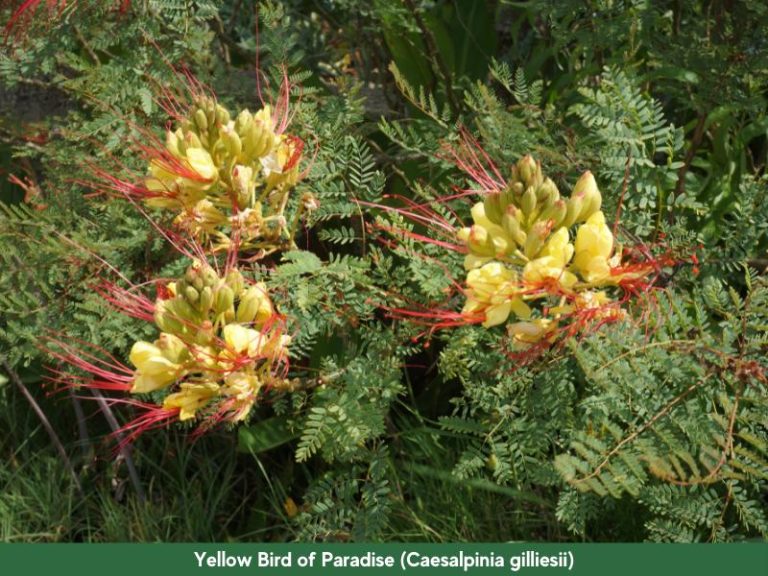How to Prune a Bird of Paradise that’s Overgrown
An overgrown bird of paradise plant isn’t always the best sight, especially in a controlled development. The giant bird of paradise species have robust leaves and may form thick clumps over time. Pruning such plants is necessary to allow newer growth and keep them in shape.
Prune taller bird of paradise stems to about one foot from the ground. Cut the small growths underneath the stem using shears. For the clumps, dig them out using a shovel and transplant them. Trim the robust foliage using shears and clean the area around the plant.
You’ll need a pruning saw, shovel, and shears to be able to prune your crape myrtle tree effectively.
Should you cut back a bird of paradise?
You should cut back a bird of paradise plant only when it is overgrown, and you would like to reduce the size to fit controlled spaces. Cutting the large leaves also reduces shade coverage if there are sun-dependant plants below the towering bird of paradise.
Cutting back, also called hard pruning, should be done in early spring on old leaves, spotted leaves, split leaves, or faded and browning leaves. Use a clean pair of shears to cut only one-third of larger leaves and spare the rest to encourage new leaves to grow.
Cut overgrown strelitzia plants using a pair of pruning saws to about one foot from the ground to keep them short.
How to prune a bird of paradise (strelitzia)
The bird of paradise plant develops broad foliages and flowers and can grow too thick to form clumps, interfering with the neighboring plants. Pruning is necessary to remove the overgrown, old, damaged, and diseased parts to clean up the plant to be attractive as before.
The birds of paradise varieties have specific pruning periods. For the Mexican and yellow birds of paradise, pruning is most effective in late winter after the frost threat or early spring.
Meanwhile, the red species benefit from pruning in early spring and mid-summer. The ideal height to cut them is 6-12 inches from the ground.
Prune strelitzia plant using sharp objects such as a pruning saw, loppers, and hand pruners. Blunt objects may tear the leaves or the other plant parts and make them susceptible to infections. Use clean instruments to avoid transferring fungal infections or other diseases into the plants or from the plants. Rub them with ethanol or isopropyl alcohol after a few cuts.
Wear heavy-duty hand gloves and clothing to protect yourself.
Below is a step-by-step guide on pruning the flowers, damaged and oversized leaves, and thinning out overgrown birds of paradise plants.
1. Pruning the dead flowers
Cutting damaged and faded flowers is recommended for a mature strelitzia plant that has bloomed for at least three years. Birds of paradise usually flower in summer for about 2-3 three weeks, then drop their petals, fade, or turn brown and die.
Prune after the flowers have died. However, you can cut them earlier when at least two have faded and started falling to help the remaining flowers last longer.
The bird of paradise flowers emerge from a stem, which can rot and brown after the flowers fade and die. To remove the dead flowers, follow the branch from which each is held and cut a reasonable length, leaving a small portion close to the ground. After removing the flower, the stem won’t rot, helping the plant stay neat.
2. Pruning oversized and damaged foliages
The leaves of the strelitzia plant are broad, glossy, and resemble those of the banana tree. When grown as a houseplant, the leaves can sometimes overgrow and cover a larger space, blocking your windows or doors. Meanwhile, the leaves also turn brown and die after the flowering period. Afterward, they rot and spread fungal infections to the rest of the plant.
It is necessary to prune the large and damaged leaves to keep them to the desired size and prevent rotting.
Use your pruning saw to remove the whole of the damaged leaves. Alternatively, pluck the rotten leaves with your hands. Trim large leaves to your desired size using a pair of clean pruning shears. Spare leaves are more than 50 percent good.
3. Thin the overcrowded growth and cut back the plant
An overgrown bird of paradise plant is dense with crowded stems and leaves. The plant and its undergrowth span up to 5 feet around the branches below, making your garden or yard untidy.
The overgrown bird of paradise plant’s thick stems and foliages don’t allow light and air penetration to the plants at the center. They must be thinned to enable the passage of these essential elements and keep the plant free from fungus.
- To thin out the crowded plant, start by clearing the small growths below the stems and on the ground.
- Trim their edges using pruning shears, proceeding steadily in a circular direction towards the center.
- Dig the soil around their roots to remove the rootball. Slowly push your shovel into the soil to reach the deepest roots and carefully remove them from the ground. Be careful not to damage the roots.
- Afterward, prepare the removed shoots with roots and subdivide them to transplant them to the other areas of your yard.
- For the bird of paradise plant taller than the desired height, use a pruning saw to cut the stems to about one foot from the ground. Start cutting the branches on the outer parts going inwards.
- Next, you want to cut the dense foliages to allow new ones to grow.
Thinning out an overgrown and crowded bird of paradise plant clears the plants and allows new growth to develop after one to two blooming seasons.
Take care of the thinned plant by watering it correctly and applying a liquid fertilizer in the active growth period to encourage it to grow back and bloom as before.
How often should you prune birds of paradise?
Prune the bird of paradise after a few years, depending on the plant’s growth rate. Hard prune the plant for the first time when the plant has bloomed for at least three years. Prune it the second time after the plant has grown out of control in the next few years.
When to cut back an overgrown strelitzia plant
Cutting back, also called hard pruning, is best done in early spring when the strelitzia plant is about to start growing actively. Most leaves and stems are removed during cutting back, and they would grow back rapidly over the next few weeks in spring and summer.
Do you cut off dead birds of paradise leaves?
Hard pruning in early spring also targets dead bird of paradise leaves to remove them and encourage new ones to grow from the stem. Dead leaves could be brown or faded and drooped off.
Such leaves are cut from the base closest to the branch using a pair of sharp shears and disposed of to allow new growth.
Can you keep a bird of paradise small?
While the strelitzia plant is genetically a massive plant that can grow up to 6 feet tall and 6 feet wide, you can make adjustments to keep this tropical plant small.
Cutting back the plant regularly, providing minimal growth elements, and choosing a dwarf bird of paradise varieties are the best methods to keep this plant small.
Regular cutting back or pruning targets old, damaged, split, or spotted leaves. Timely pruning of the leaves in early spring keeps them small while giving them sufficient time to recover in the spring and summer.
Secondly, minimizing water supply and reducing light promotes stunted growth in the plant, helping to keep it small.
Lastly, select a dwarf variety of bird of paradise plants such as the strelitzia juncea if you don’t want to struggle with the other options. This variety grows to one foot tall when mature and suitable for small spaces or as a houseplant.
Reference
- University of Central Florida: Before Prunning a Bird of Paradise.





